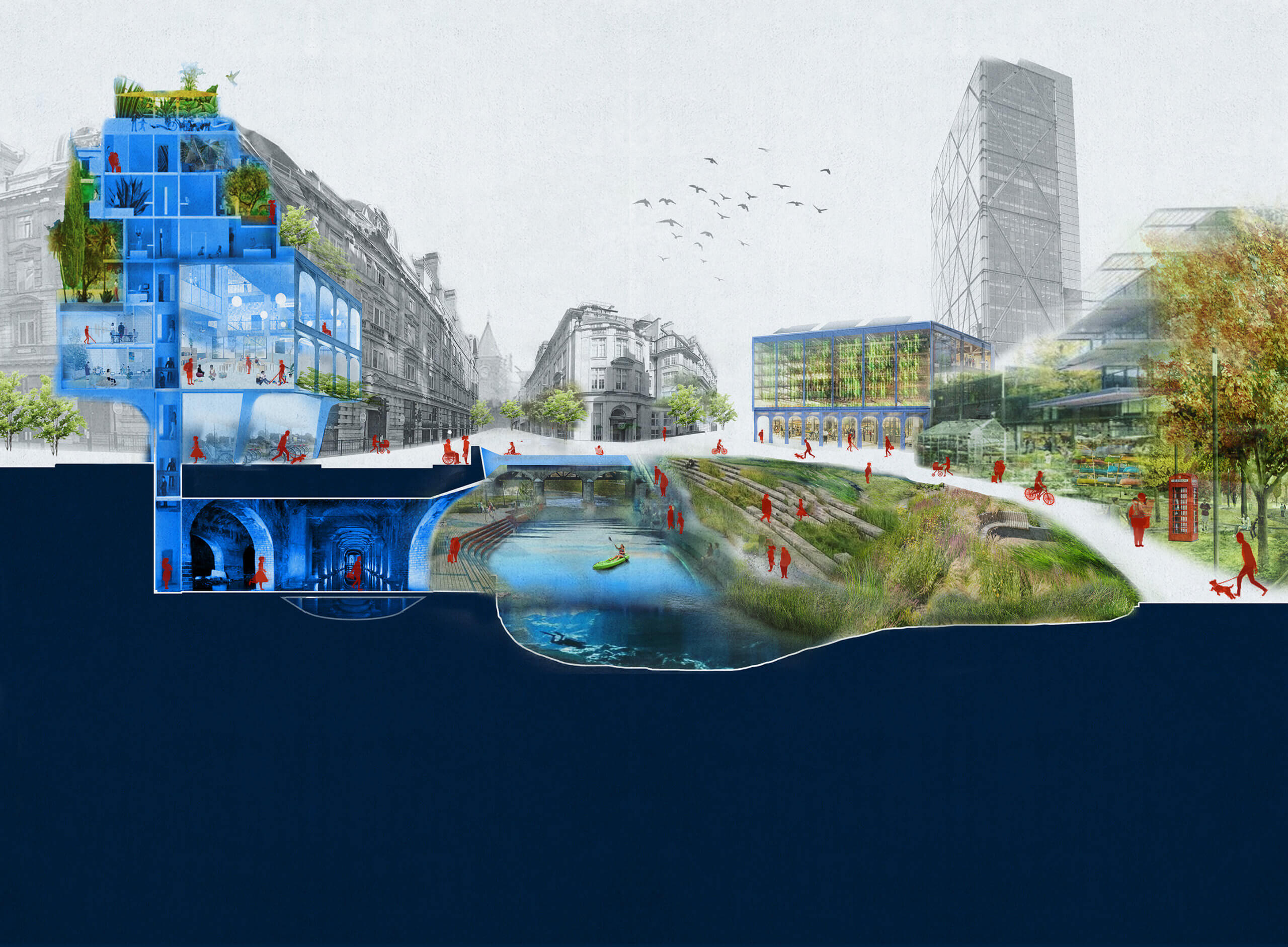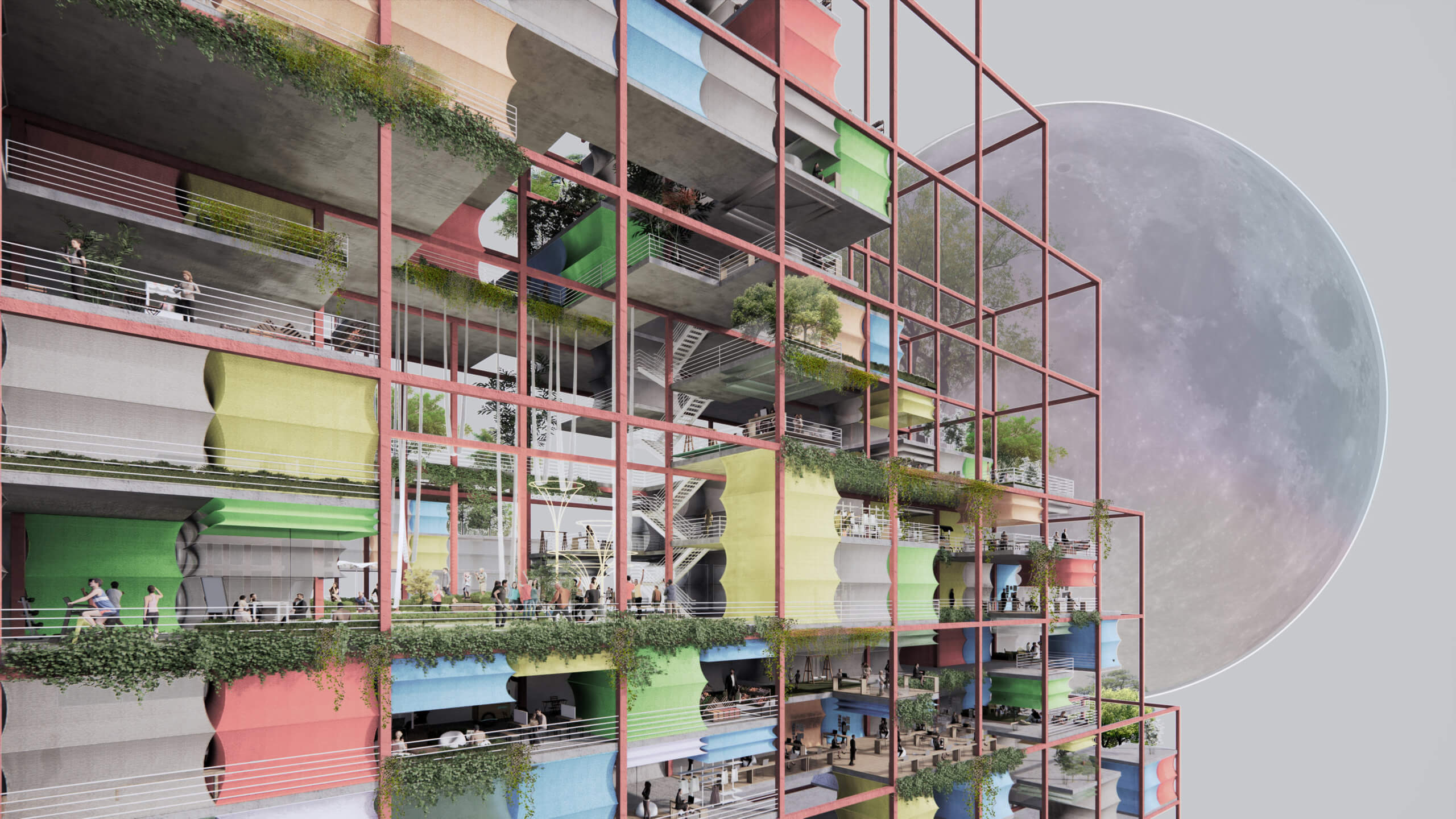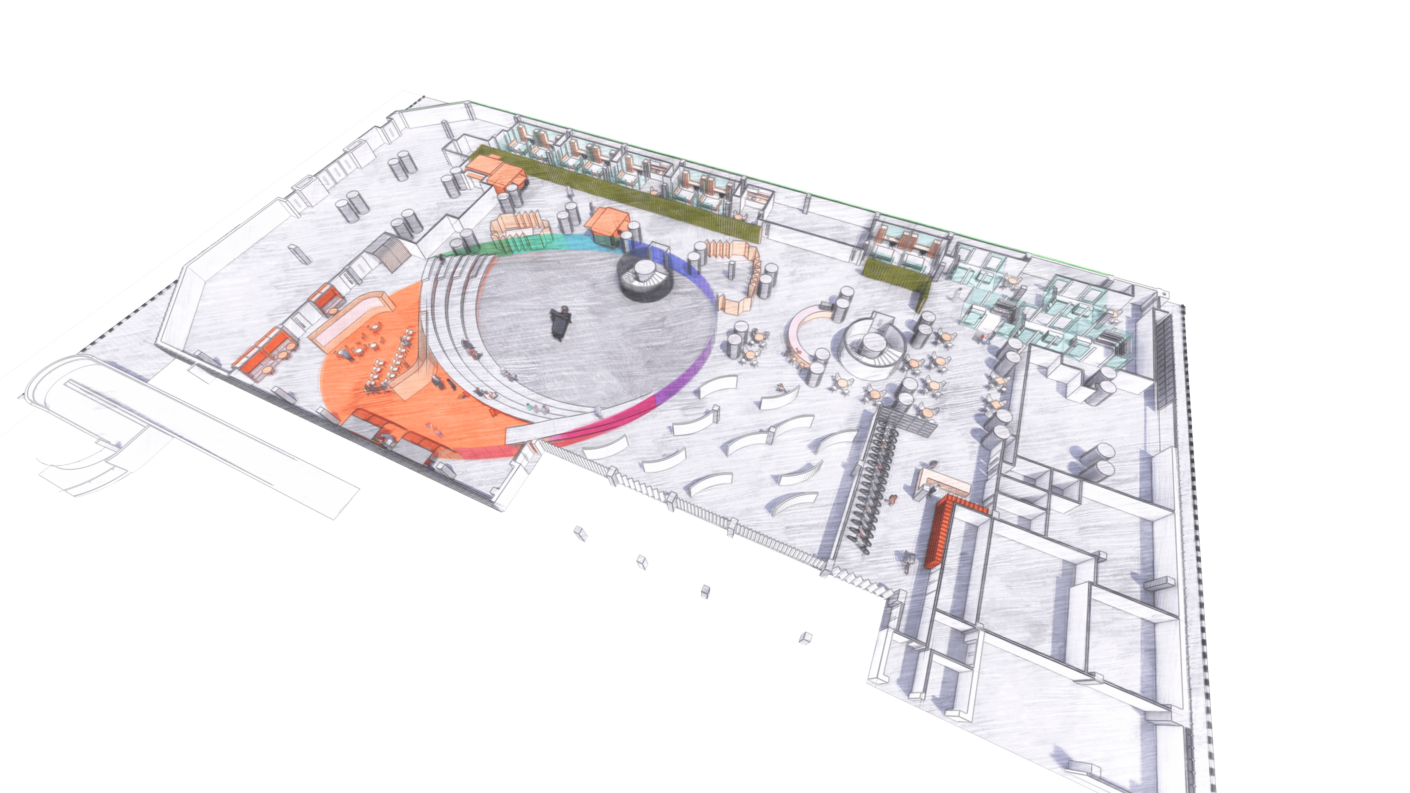-
Design concepts for three prominent sites in the City of London, including one in the Barbican earmarked for development, emphasize social equity and sustainability.
-
Creative visions are part of the firm’s annual international Phil Freelon Design Competition, which encourages innovative placemaking through a “Living Design” framework.
Architects and designers from multiple Perkins&Will studios worldwide have designed bold visions for transforming parts of the City of London into healthier, more sustainable, and inclusive places for a design concept competition. These visions, prompted by the firm’s annual Phil Freelon Design Competition, carefully evaluated by a high-profile panel of external jurors.
The Phil Freelon Design Competition honors the eponymous late architect and Perkins&Will design director who championed design for humanity. Launched firmwide in 2004 as the Design Leadership Council (DLC) Design Competition and renamed in 2019 in Freelon’s memory, the annual contest is part of the firm’s culture of curiosity, creativity, and innovation.
For this year’s competition, international design teams were tasked with reimagining one of three existing sites within the City boundary, each with a design scale—urban, building or interior. The urban scale focused on the Culture Mile, a destination stretching from Farringdon to Moorgate that inspires visitors to experience London’s architecture, arts, and culture. The building scale involved an architectural challenge on a plot between Gresham Street and the historic Guildhall. The interior scale called for retrofitting an unused part of the Barbican, an iconic performing arts centre within the City of London.
Competition organizers selected the City of London for its resilience, having survived humanmade and natural disasters for over 2,000 years. In a society permanently altered by the COVID-19 pandemic and corollary social crises, the competition’s challenge this year was to conceive a design solution that supports holistic well-being and enhances the quality of life for everyone—part of Perkins&Will’s Living Design framework.





